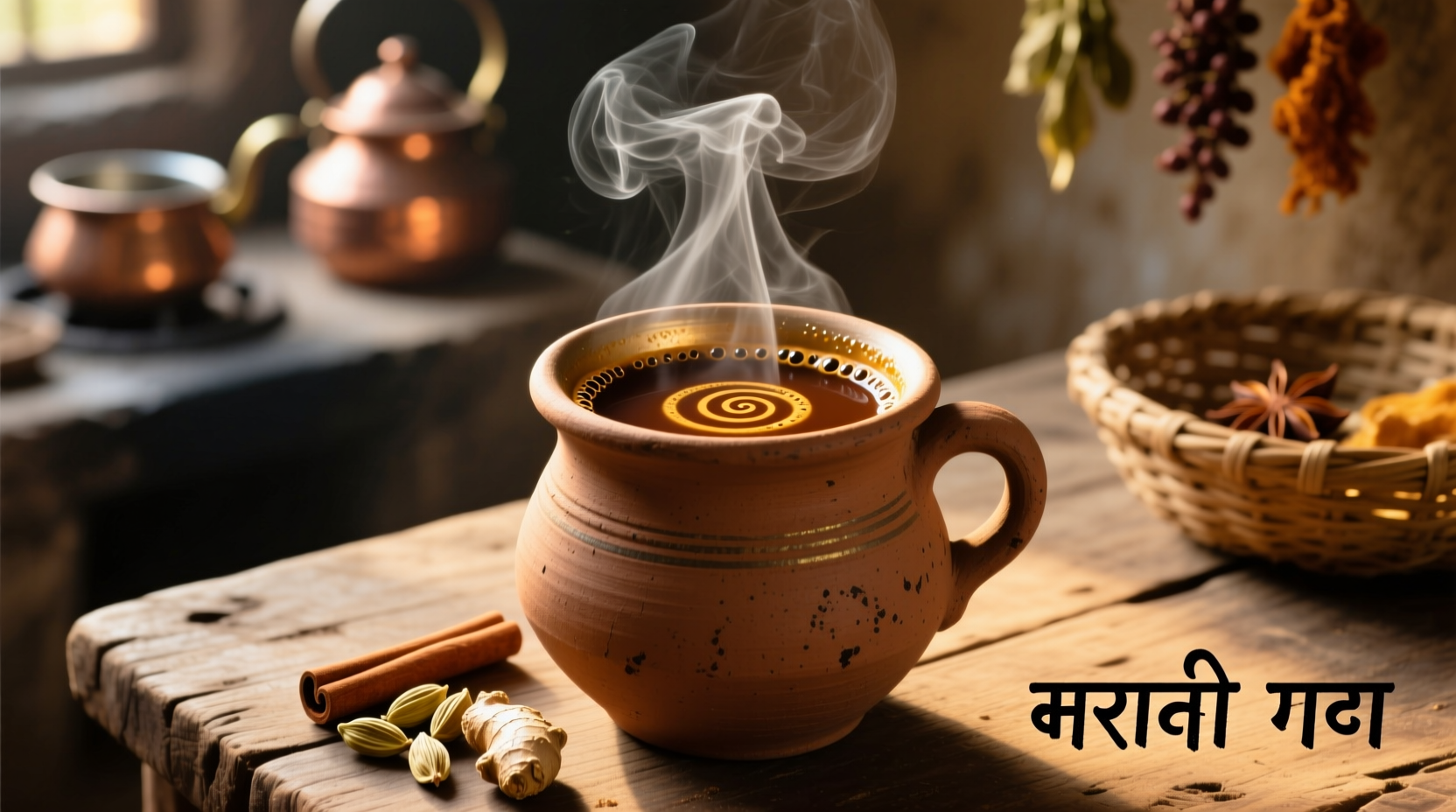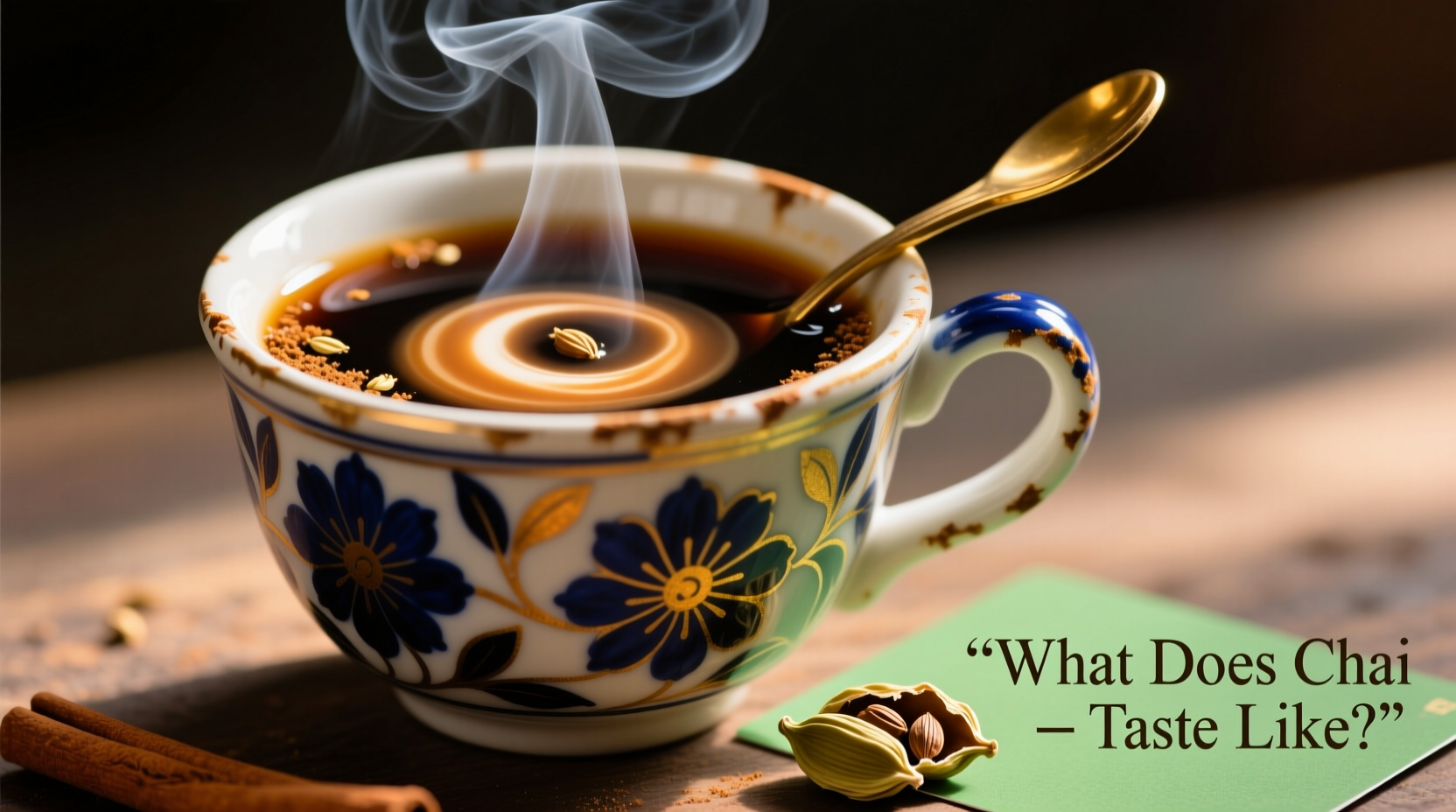If you've ever wondered what gives chai its distinctive character, you're not alone. This beloved beverage has captivated taste buds worldwide, but its flavor profile can be difficult to describe without experiencing it firsthand. Let's break down exactly what you can expect when you take your first sip of authentic masala chai.
Understanding Chai: More Than Just Tea
Before we dive into the taste, it's important to clarify what "chai" actually means. In Hindi and many Indian languages, "chai" simply means "tea." What Westerners typically refer to as "chai" is actually "masala chai"—tea brewed with a mixture of spices ("masala"). This distinction matters because plain tea without spices would taste completely different from the spiced version most people are curious about.
The Core Flavor Components of Authentic Masala Chai
Authentic masala chai creates a symphony of flavors that work in harmony. Let's examine each element that contributes to chai's distinctive taste:
Sweetness Level
Traditional chai contains sugar, but not in overwhelming amounts. The sweetness balances the spices and tea bitterness without making the beverage cloying. In India, chai wallahs (street vendors) typically add about one to two teaspoons of sugar per cup, creating a subtle sweetness that enhances rather than dominates.
Spice Complexity
The spice blend is what makes masala chai unique. When properly balanced, these spices create a warming sensation without being overpowering:
- Cardamom: Provides a floral, citrusy note that's often the most prominent spice
- Cinnamon: Adds warmth and a sweet woody flavor
- Ginger: Contributes a pleasant heat and slight pungency
- Cloves: Offer a strong, almost medicinal aroma in small amounts
- Black pepper: Provides subtle heat that lingers on the palate
Creamy Texture
Unlike many teas, chai is traditionally prepared with milk, which creates a rich, smooth mouthfeel. The milk softens the tannins in the black tea and blends with the spices to create a comforting, almost velvety texture. Whole milk is typically used in India, though many modern variations use alternatives.
Tea Base Characteristics
The foundation of chai is strong black tea, usually Assam or another robust variety that can stand up to the spices and milk. This provides:
- A malty, slightly astringent backbone
- Rich amber color
- Bitter notes that balance the sweetness
Regional Variations in Chai Flavor Profiles
Chai isn't a one-size-fits-all beverage. Its flavor varies significantly across regions, creating different taste experiences:
| Region | Distinctive Flavor Characteristics | Key Spice Variations |
|---|---|---|
| Northern India | Bold, robust, with pronounced spice heat | Higher ginger and black pepper content |
| Southern India | Milder spice profile, stronger tea flavor | More cardamom, less ginger |
| Eastern India | Sweeter, creamier preparation | Added fennel seeds, sometimes star anise |
| Western India | Complex spice balance, medium strength | Equal parts major spices with subtle variations |
This regional diversity explains why your experience with chai might differ depending on where it's prepared. According to research from the Spices Board of India, over 200 regional variations of masala chai exist across the subcontinent alone.
How Preparation Method Affects Chai's Taste
The way chai is prepared dramatically influences its final flavor profile:
Traditional "Double-Boiled" Method
In India, authentic chai is made by boiling the tea leaves, spices, milk, and water together multiple times. This "double-boiling" technique:
- Extracts maximum flavor from spices
- Creates a richer, more integrated flavor profile
- Produces a characteristic froth on top
- Results in a more balanced taste than single-steep methods
Sweetening Techniques
The timing of sugar addition affects chai's flavor chemistry. Adding sugar during the boiling process:
- Helps extract more flavor compounds from spices
- Creates subtle caramel notes
- Results in a more integrated sweetness
Authentic Chai vs. Commercial "Chai" Products
Many people's first experience with "chai" comes from commercial products that differ significantly from authentic preparation:
| Authentic Masala Chai | Commercial Chai Products |
|---|---|
| Freshly brewed with whole spices | Often made with pre-mixed powders or syrups |
| Subtle spice balance | Often overly sweet with dominant cinnamon flavor |
| Complex, layered flavor profile | One-dimensional taste with artificial notes |
| Natural astringency from black tea | Often lacks tea bitterness, overly creamy |
A sensory analysis conducted by the Cornell University Food Science Department found that commercially prepared chai lattes contain up to 50% more sugar and significantly less complex spice profiles compared to traditionally prepared masala chai.
How to Taste Chai Like an Expert
To fully appreciate chai's flavor complexity, follow these professional tasting techniques:
- Observe the color - Authentic chai should have a rich amber to reddish-brown hue, not pale orange
- Smell before sipping - Bring the cup to your nose and identify individual spice aromas
- Sip slowly - Let the chai coat your tongue to detect the progression of flavors
- Notice the finish - Authentic chai leaves a pleasant warmth that lingers for several minutes
- Check for balance - No single element (sweetness, spice, tea) should dominate
Professional tasters look for what's called "chai harmony"—when all elements work together seamlessly without any single component standing out too much.

Why Chai Tastes Different Than You Might Expect
Several factors can influence your chai tasting experience:
- Spice freshness - Ground spices lose potency quickly; whole spices provide more vibrant flavor
- Milk temperature - Scalded milk creates different flavor compounds than gently warmed milk
- Brewing time - Under-brewed chai lacks depth; over-brewed becomes bitter
- Water quality - Mineral content affects how flavors extract from spices
According to a study published in the Journal of Food Chemistry, the optimal brewing temperature for extracting chai spices is between 90-95°C (194-203°F), with a minimum steeping time of 5 minutes to achieve proper flavor integration.
Developing Your Chai Palate
If you're new to chai, your taste buds might need time to appreciate its complexity. Start with milder preparations and gradually explore more traditional, spice-forward versions. Many first-time chai drinkers report that the flavor profile becomes more appealing after 3-5 exposures as their palate adjusts to the unique spice combination.
Remember that chai isn't meant to be a simple, one-note beverage—it's a complex interplay of flavors designed to engage multiple senses simultaneously. What might seem overwhelming at first often becomes comforting and familiar with repeated tasting.











 浙公网安备
33010002000092号
浙公网安备
33010002000092号 浙B2-20120091-4
浙B2-20120091-4